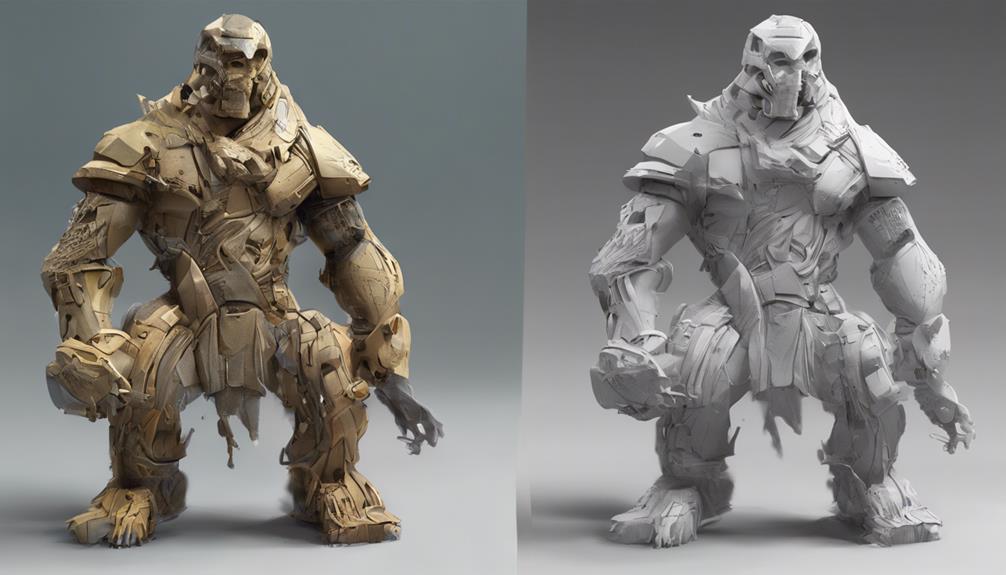The world of 3D printing continues to develop with the introduction of top slicer software tailored to enhance the user experience. From industry-leading free options to specialized solutions and advanced tools, the choices are vast and varied. These software offerings not only cater to basic slicing needs but also bring forth innovative features to optimize the manufacturing process. As technology advances, the demand for precision and efficiency in 3D printing grows, making the selection of the right slicer software essential for achieving quality results.
Industry-Leading Free Slicers

When considering industry-leading free slicers for 3D printing, several standout options provide advanced features and user-friendly interfaces.
Cura by Ultimaker is a popular choice, supporting various file types and offering a user-friendly experience.
PrusaSlicer stands out for its ease of use and supportive community, catering to both beginners and experts.
Slic3r, an open-source software, boasts complex features and supports various file formats like .stl, .obj, and .amf.
ideaMaker, although having a learning curve, is stable and faster in operation.
These free slicers offer a range of capabilities to meet the diverse needs of 3D printing enthusiasts, ensuring a seamless slicing process for creating high-quality prints.
Specialized Slicer Solutions
Specialized slicer solutions offer tailored functionalities to cater to specific needs within the domain of 3D printing technology. Octoprint, originally a remote print monitoring program, now provides extensive slicing capabilities with Raspberry Pi support.
Astroprint serves as a remote 3D printing host with a full-featured slicer, suitable for both beginners and experts. PreForm, a slicer program by Formlabs, is specifically designed for Formlabs printers, focusing on achieving high-quality prints.
Additionally, Lychee stands out for its well-organized interface and magic mode for automatic optimization, making it a suitable choice for beginners in the 3D printing field. These specialized slicer solutions enhance the printing experience by addressing specific requirements and providing tailored features for different user needs.
Advanced Slicer Tools

Within the domain of 3D printing technology, advanced slicer tools offer sophisticated functionalities tailored for manufacturing professionals seeking additive design precision. These tools provide intricate control over printing parameters such as layer height, infill patterns, support structures, and print speed.
Advanced slicers like Netfabb Standard excel in optimizing designs for manufacturing, ensuring high-quality output. They often incorporate features like automated repair functions for complex geometries, advanced support generation algorithms, and specialized options for specific materials.
While many leading slicers are free, paid options cater to specific requirements, offering advanced capabilities for intricate designs or industrial applications. Choosing the best slicer involves evaluating personal needs, with industry-standard options like Cura and specialized slicers like PrusaSlicer optimized for specific printers.
Web-Based Slicer Innovations
Exploring the evolution of slicer technology, the domain of 3D printing has witnessed significant advancements in web-based slicer innovations. Web-based slicer solutions like Kiri:Moto offer extensive browser-based slicing capabilities suitable for all experience levels.
3DPrinterOS provides a cloud-based operating system tailored for both hobbyists and experienced individuals, simplifying the 3D printing process. Additionally, SelfCAD stands out as a web-based CAD software incorporating a built-in slicer optimized for both FDM and resin 3D printing.
These web-based slicer tools not only enhance accessibility but also streamline the slicing process, making it more convenient for users to prepare their 3D models for printing.
Paid Slicer Considerations

When evaluating paid slicer software options, it is important to review their extensive features and suitability for particular printing needs. Paid slicers offer advanced capabilities that can greatly enhance the 3D printing experience. Here are four key considerations when evaluating paid slicer software:
- Advanced Support Structures: Paid slicers often provide more sophisticated support generation options, allowing for intricate designs and complex prints.
- Enhanced Customization: Paid slicer software typically offers a higher level of customization, enabling users to fine-tune settings for the best print quality.
- Technical Support: Subscribing to a paid slicer may come with dedicated technical support, ensuring prompt assistance in case of any issues or queries.
- Exclusive Features: Paid slicers may include exclusive features such as advanced algorithms, simulation tools, or integration with specific hardware for enhanced functionality.
Frequently Asked Questions
Can I Use Web-Based Slicers Offline?
Yes, web-based slicers like Kiri:Moto, 3DPrinterOS, and SelfCAD provide offline functionality by allowing users to download their files for local processing. This feature guarantees flexibility and accessibility even without a constant internet connection.
Are There Slicers Optimized for Specific Printer Brands?
Optimized slicers for specific printer brands exist, enhancing compatibility and performance. For instance, Z-Suite by Zortrax is tailored for Zortrax resin printers, ensuring seamless integration and peak results. Such specialization is common in the slicer software landscape.
How Do Advanced Slicers Differ From Free Options?
Advanced slicers offer intricate tools for additive design and manufacturing, catering to professionals. They provide robust features like complex support structures, advanced print settings, and optimization capabilities. In contrast, free slicers focus on user accessibility and basic functionality.
Can Specialized Slicers Work With Multiple Printer Types?
Specialized slicers, like Octoprint and Astroprint, cater to various printer types. These slicers offer tailored features for specific machines, enhancing compatibility and performance. Users benefit from optimized settings and seamless integration, making them versatile choices for diverse printing needs.
Are Paid Slicers Worth the Investment for Hobbyists?
Paid slicers offer advanced features, technical support, and specialized functionalities that may benefit hobbyists seeking precision and efficiency. While free options suffice for many, paid slicers can enhance the user experience and output quality to a great extent.
Conclusion
To summarize, the top slicer software options for 3D printing cater to a wide range of user needs and preferences, offering diverse features and capabilities.
From industry-leading free slicers to specialized solutions, advanced tools, web-based innovations, and paid slicers, the variety of choices available guarantees that users can find the perfect software to optimize their 3D printing experience.
The coincidence of advanced technology and user-friendly interfaces in these slicer options sets a new standard for the industry.